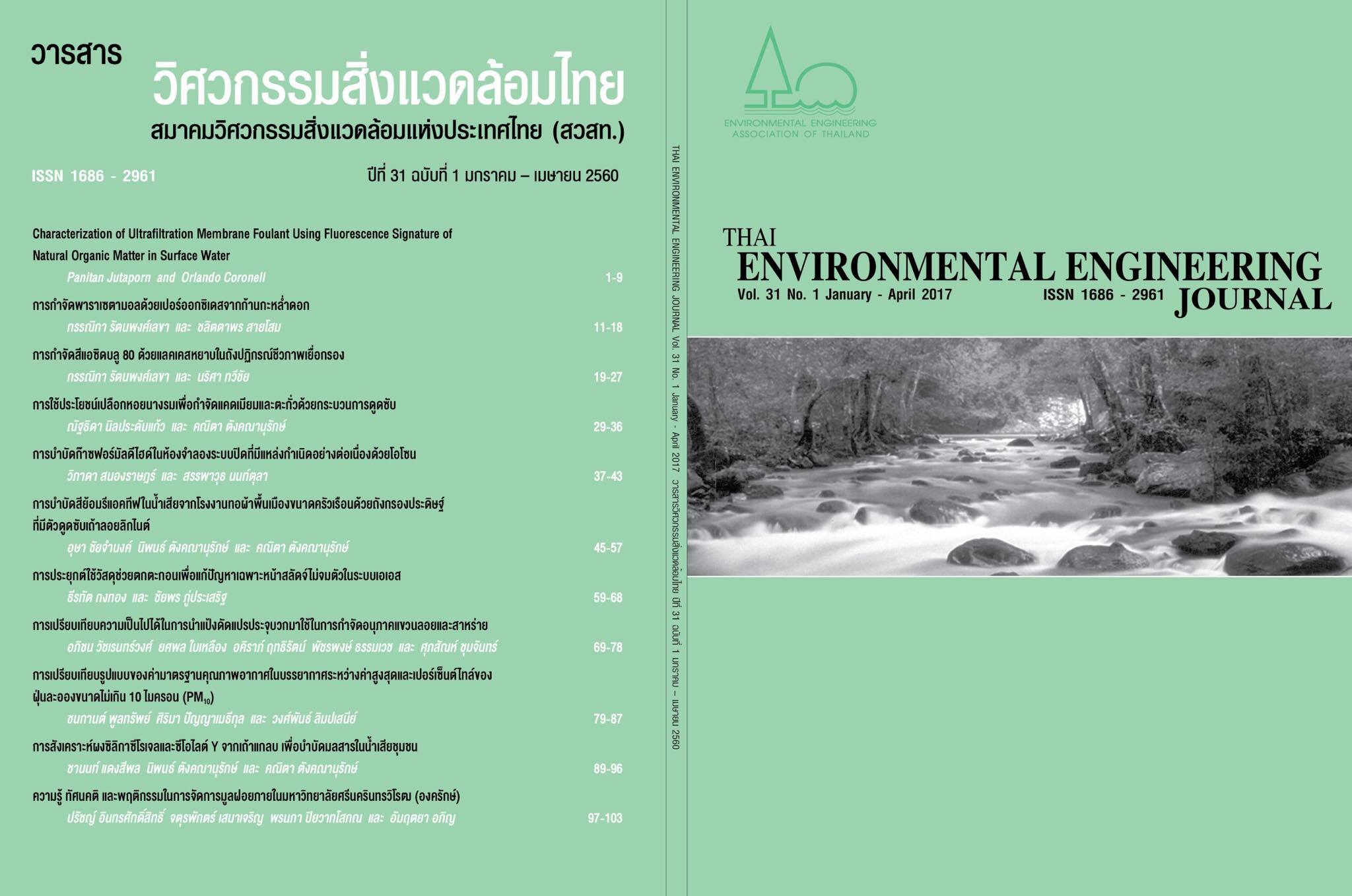Removal of Acid Blue 80 using Crude Laccase in Membrane Bioreactor
Main Article Content
Abstract
This research aims to study the stability of crude laccase, the effects of Acid Blue 80 concentration and the flow rate on dye removal in a membrane reactor and a membrane bioreactor. The ultrafiltration membrane used was made from polyethersulfone with a molecular weight cut-off of 10 kDa. The operational system was crossflow filtration mode. The results showed that the use of the ultrafiltration membrane combined with the reactor retained more than 70% of the enzyme in the system at the substance flow rate of 300 mL/min for 240 minutes. Increasing dye concentration resulted in reductions of dye removal in both reactors. Increasing in substance flow rate decreased dye removal. At 240 minutes, dye concentration of 30 mg/L, and substance flow rate of 300 mL/min, the removals were approximately 47.87% and 94.25% for the membrane reactor and membrane bioreactor respectively. The results indicated that the use of the membrane bioreactor containing crude laccase yielded higher dye removal efficiency.
Article Details
References
[2] Robinson, T., McMullan, G., Marchant, R. and Nigam, P. 2001. Remediation of dyes in textile effluent: a critical review on current treatment technologies with a proposed alternative. Bioresource Technol. 77: 247-255.
[3] Katuri, K.P., Venkata Mohan, S., Sridhar, S., Pati, B.R. and Sarma, P.N. 2009. Laccase-membrane reactors for decolorization of an acid azo dye in aqueous phase: Process optimization. Water Res. 43: 3647-3658.
[4] Ciardelli, G. and Ranieri, N. 2001. The treatment and reuse of wastewater in the textile industry by means of ozonation and electroflocculation. Water Res. 35: 567-572.
[5] Konsowa, A.H. 2003. Decolorization of wastewater containing direct dye by ozonation in a batch bubble column reactor. Desalination. 158: 233-240.
[6] Lin, S.H. and Peng, C.F. 1996. Continuous treatment of textile wastewater by combined coagulation, electrochemical oxidation and activated sludge. Water Res. 30: 587-592.
[7] Rodrํguez Couto, S. 2009. Dye removal by immobilised fungi. Biotchnol. Adv. 27: 227-235.
[8] Zouari-Mechichi, H., Mechichi, T., Dhouib, A., Sayadi, S., Martํnez, A.T. and Martํnez, M.J. 2006. Laccase purification and characterization from Trametes trogii isolated in Tunisia: decolorization of textile dyes by the purified enzyme. Enzyme Microb. Tech. 39: 141-148.
[9] Bradford, M.M. 1976. A rapid and sensitive method for the quantitation of microgram quantities of protein utilizing the principle of protein-dye binding. Anal. Biochem. 72: 248-254.
[10] Suwannawong, P., Khammuang, S. and Sarnthima, R. 2010. Decolorization of rhodamine B and congo red by partial purified laccase from Lentinus polychrous Lév. Biochem Tech. 2: 182-186.


